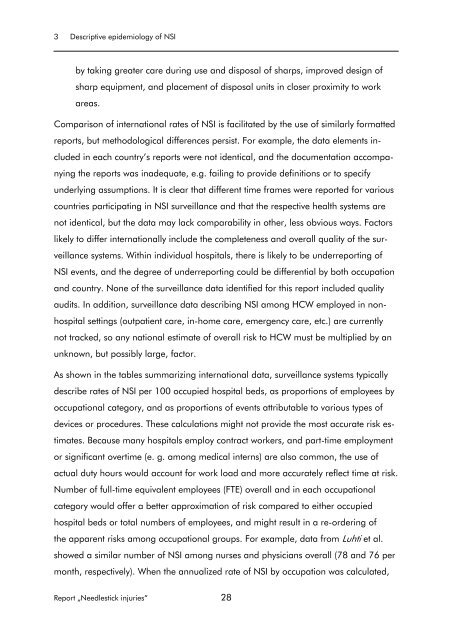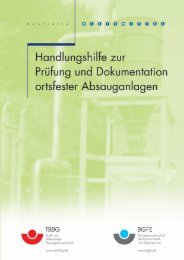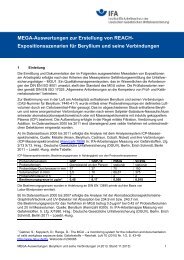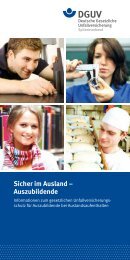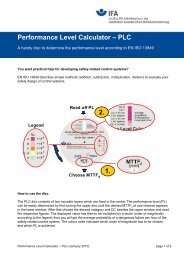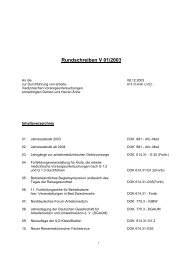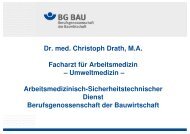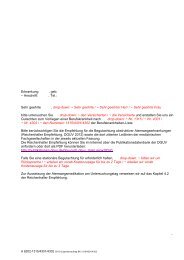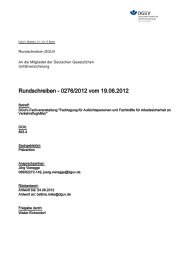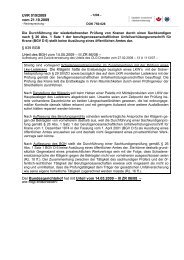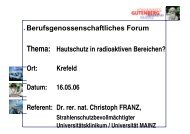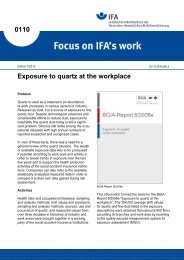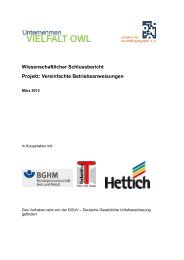Effectiveness of measures to prevent needlestick injuries among ...
Effectiveness of measures to prevent needlestick injuries among ...
Effectiveness of measures to prevent needlestick injuries among ...
Create successful ePaper yourself
Turn your PDF publications into a flip-book with our unique Google optimized e-Paper software.
3 Descriptive epidemiology <strong>of</strong> NSI<br />
by taking greater care during use and disposal <strong>of</strong> sharps, improved design <strong>of</strong><br />
sharp equipment, and placement <strong>of</strong> disposal units in closer proximity <strong>to</strong> work<br />
areas.<br />
Comparison <strong>of</strong> international rates <strong>of</strong> NSI is facilitated by the use <strong>of</strong> similarly formatted<br />
reports, but methodological differences persist. For example, the data elements in-<br />
cluded in each country’s reports were not identical, and the documentation accompa-<br />
nying the reports was inadequate, e.g. failing <strong>to</strong> provide definitions or <strong>to</strong> specify<br />
underlying assumptions. It is clear that different time frames were reported for various<br />
countries participating in NSI surveillance and that the respective health systems are<br />
not identical, but the data may lack comparability in other, less obvious ways. Fac<strong>to</strong>rs<br />
likely <strong>to</strong> differ internationally include the completeness and overall quality <strong>of</strong> the sur-<br />
veillance systems. Within individual hospitals, there is likely <strong>to</strong> be underreporting <strong>of</strong><br />
NSI events, and the degree <strong>of</strong> underreporting could be differential by both occupation<br />
and country. None <strong>of</strong> the surveillance data identified for this report included quality<br />
audits. In addition, surveillance data describing NSI <strong>among</strong> HCW employed in non-<br />
hospital settings (outpatient care, in-home care, emergency care, etc.) are currently<br />
not tracked, so any national estimate <strong>of</strong> overall risk <strong>to</strong> HCW must be multiplied by an<br />
unknown, but possibly large, fac<strong>to</strong>r.<br />
As shown in the tables summarizing international data, surveillance systems typically<br />
describe rates <strong>of</strong> NSI per 100 occupied hospital beds, as proportions <strong>of</strong> employees by<br />
occupational category, and as proportions <strong>of</strong> events attributable <strong>to</strong> various types <strong>of</strong><br />
devices or procedures. These calculations might not provide the most accurate risk es-<br />
timates. Because many hospitals employ contract workers, and part-time employment<br />
or significant overtime (e. g. <strong>among</strong> medical interns) are also common, the use <strong>of</strong><br />
actual duty hours would account for work load and more accurately reflect time at risk.<br />
Number <strong>of</strong> full-time equivalent employees (FTE) overall and in each occupational<br />
category would <strong>of</strong>fer a better approximation <strong>of</strong> risk compared <strong>to</strong> either occupied<br />
hospital beds or <strong>to</strong>tal numbers <strong>of</strong> employees, and might result in a re-ordering <strong>of</strong><br />
the apparent risks <strong>among</strong> occupational groups. For example, data from Luhti et al.<br />
showed a similar number <strong>of</strong> NSI <strong>among</strong> nurses and physicians overall (78 and 76 per<br />
month, respectively). When the annualized rate <strong>of</strong> NSI by occupation was calculated,<br />
Report „Needlestick <strong>injuries</strong>“ 28


